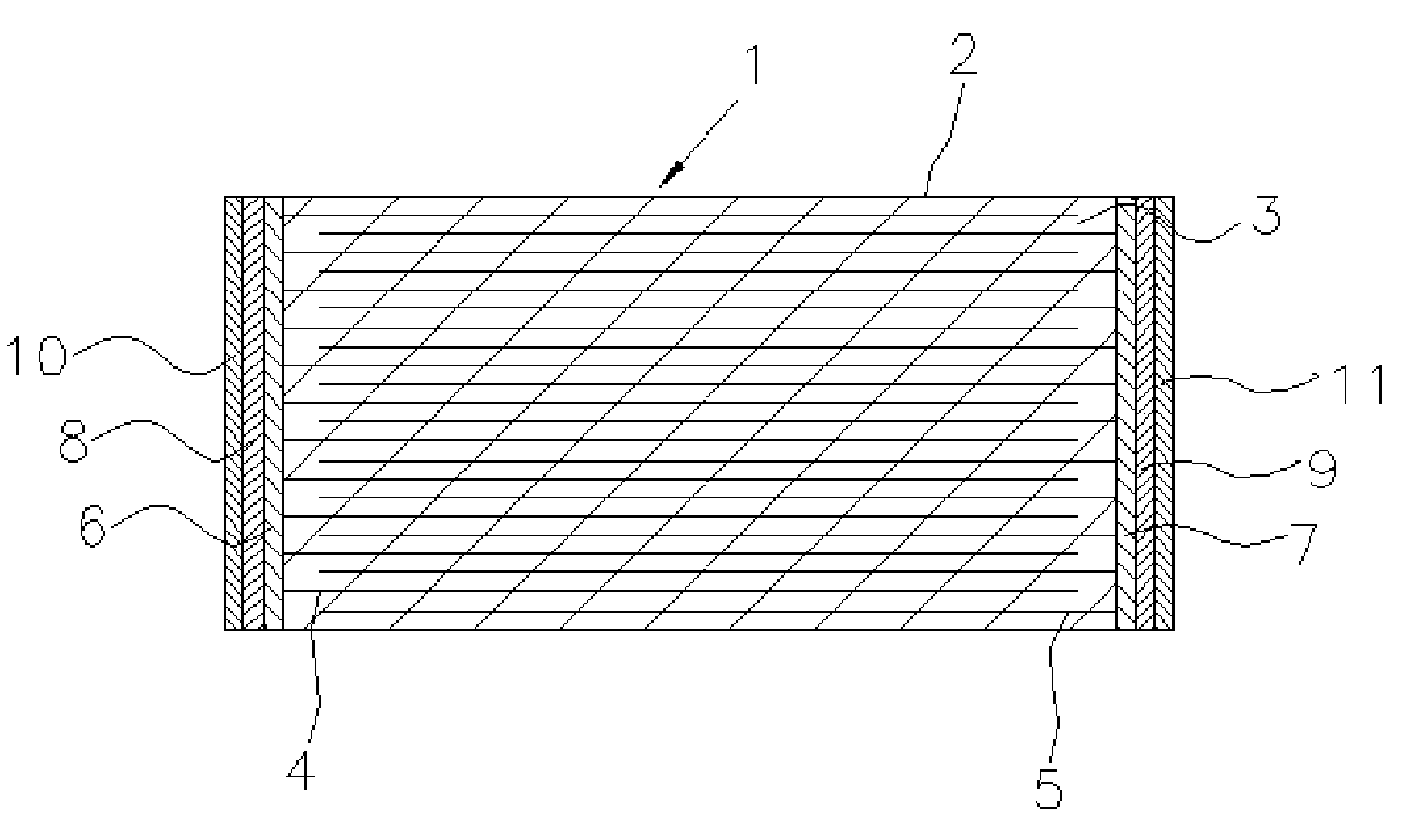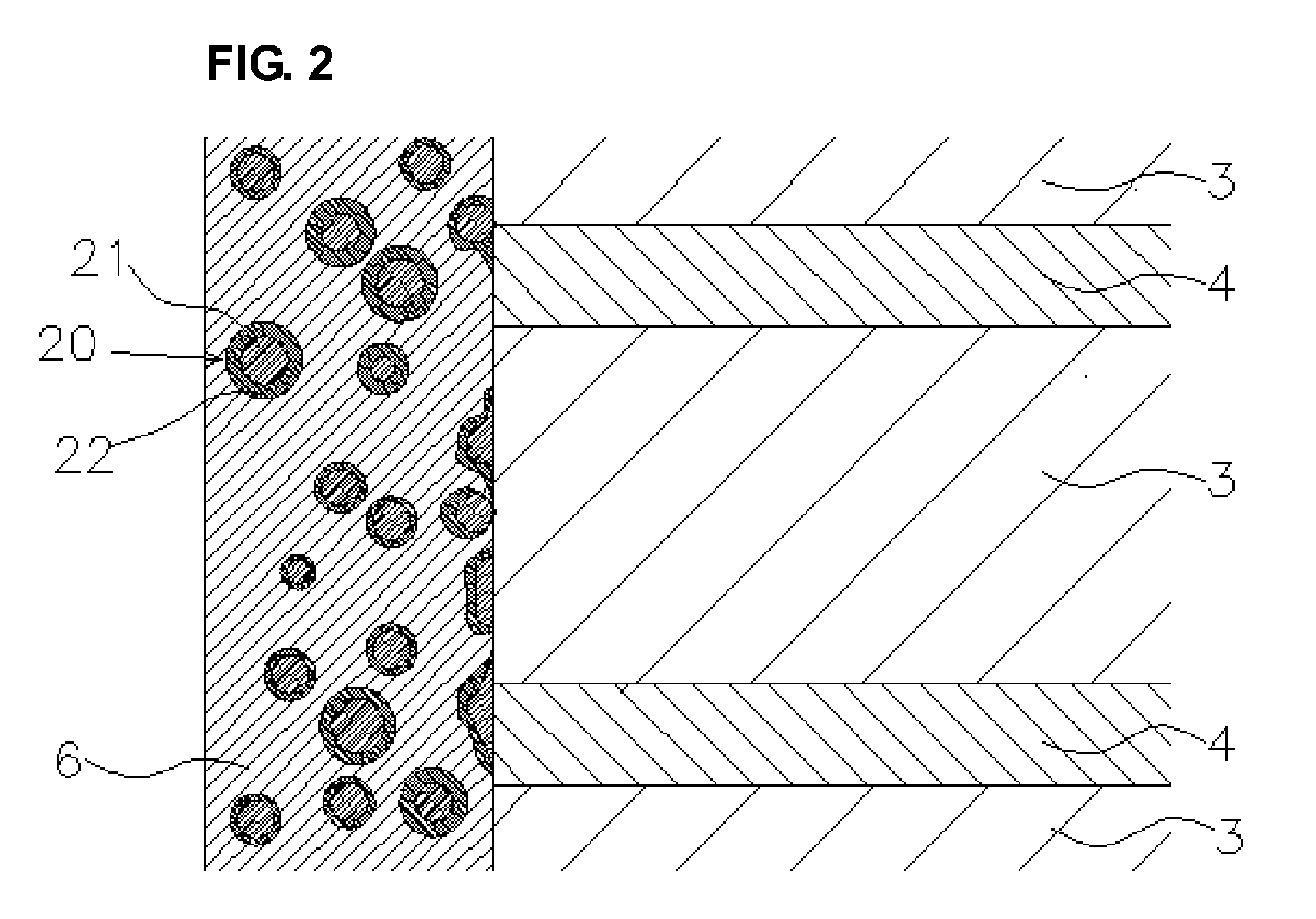Ceramic electronic component and method for manufacturing the same
a ceramic electronic component and ceramic technology, applied in the direction of fixed capacitor details, variable capacitors, fixed capacitors, etc., can solve the problems of reliability, prone to blistering at the surface of the plating layer, and the electroless plating layer formed by electroless plating does not have sufficient adhesion to the side surfaces, etc., to achieve high effective volume and high reliability
- Summary
- Abstract
- Description
- Claims
- Application Information
AI Technical Summary
Benefits of technology
Problems solved by technology
Method used
Image
Examples
example 1
[0056]A multilayer composite of 1.0 mm in length by 0.5 mm in width by 0.5 mm in thickness was prepared for a monolithic ceramic capacitor, and on which plating layers were formed. The dielectric ceramic layers were made of a barium titanate-based dielectric material, and the internal electrodes were essentially made of Ni. Each dielectric ceramic layer between two adjacent internal electrodes had a thickness of about 2 μm, and each internal electrode layer had a thickness of about 1 μm.
[0057]After being dried, the multilayer composite was subjected to sandblasting with an abrasive so that the height of the protrusions of the internal electrodes from the internal electrode-exposing surfaces was about 1 μm on average.
[0058]Then, a B—Si glass powder having a softening point of about 600° C. and an average particle size of 1.1 μm was prepared. The glass powder was subjected to sputtering to give electroconductivity to the surfaces of the powder particles. The powder particles were subs...
example 2
[0068]The same multilayer composite and the same glass particles as in Example 1 were prepared. The glass particles were coated with Ni films in the same manner as in Example 1.
[0069]The Ni-coated glass particles were added to an electroless Cu plating bath containing OPC Copper T produced by Okuno Chemical Industries to a concentration of 30 g / L, and were dispersed by stirring at a bath temperature of 40° C. and a pH of 12.
[0070]Then, 30 mL of multilayer composites and 70 mL of Cu-coated solder balls having a diameter of 0.7 mm were placed in a 300 mL rotation barrel.
[0071]The rotation barrel was immersed in the plating bath and rotated at 12 rpm. As a result, Cu plating layers containing the glass particles were formed to a thickness of 5 μnm on the internal electrode-exposing surfaces of the multilayer composites.
[0072]After being taken out from the rotation barrel, the multilayer composites were heated to a temperature of 700° C. at a rate of 5° C. / min in a nitrogen atmosphere a...
PUM
| Property | Measurement | Unit |
|---|---|---|
| thickness | aaaaa | aaaaa |
| particle size | aaaaa | aaaaa |
| thickness | aaaaa | aaaaa |
Abstract
Description
Claims
Application Information
 Login to View More
Login to View More - R&D
- Intellectual Property
- Life Sciences
- Materials
- Tech Scout
- Unparalleled Data Quality
- Higher Quality Content
- 60% Fewer Hallucinations
Browse by: Latest US Patents, China's latest patents, Technical Efficacy Thesaurus, Application Domain, Technology Topic, Popular Technical Reports.
© 2025 PatSnap. All rights reserved.Legal|Privacy policy|Modern Slavery Act Transparency Statement|Sitemap|About US| Contact US: help@patsnap.com



